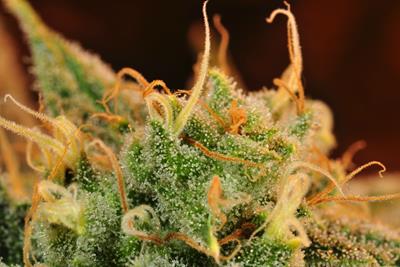
Monday January 13, 2020
 Growing
Growing
We’ve talked a lot about the intricacies of soil grows – how to prepare the soil, when to water plants, why companion planting is great for pest control – but one subject we haven’t touched on as much is an alternative cultivation method called hydroponics. This water-based cultivation practice is great for many reasons and not nearly as intimidating as it sounds.
What is Hydroponics?
Hydroponics is a soil-less cultivation practice that uses nutrient-rich, pH-balanced water to grow plants. The technique is especially beneficial for those with limited space because it does not require large amounts of soil for root growth and expansion. Other benefits of hydroponic cultivation include a quicker grow period, larger harvests, and reduced interference from pests and weeds.
Plants can more readily absorb nutrients in a hydroponic grow because the nutrients (or “nutes”) are delivered directly to the plant roots. This can be a great thing and gives plants exactly what they need when they need it instead of forcing them to “look” for the nutrients in the soil. This allows the plants to use their energy to grow large and produce beautiful buds, however, this can also prove to be a challenge should the balance of nutrients be off.

Hydroponically-grown cannabis will show signs of nutrient burn much more quickly than soil grows and must be rectified quickly to spare the crop. The best way to combat nutrient problems in a hydroponic grow is to flush the sick plants with fresh water (make sure the pH balance is between 5.5 and 6.5 using testing strips and a pH balancing solution) then start them again in water with a lower nutrient concentration.
Must-Have Supplies for Hydroponic Cultivation
It’s easy to make a hydroponic grow setup at home using only a few cheap supplies, the first of which is a waterproof tub (like a plastic tote with a lid) which can be purchased for around $10 at your local department store. You’ll also need special hydroponic pots called net pots with a diameter somewhere between four and six inches as well as a grow medium to provide the support, both of which can be purchased at your local garden supply store or on Amazon for a few bucks each. Special hydroponic nutrients (which are basically standard 3-3-3 nutes plus additional micronutrients) can also be purchased from these distributors.
You’ll also need either an air pump to oxygenate the water or a submersible water pump spray water directly onto the plant roots. These are important because they ensure that the plant roots will receive plenty of oxygen to prevent root rot and improve growth. Whether you choose an air pump or a water pump is up to you, just remember that an air pump requires the plant roots to be partially submerged in the water while the water pump requires that the roots be suspended in the air while water continuously sprays onto them.
Lastly, determine the best grow lights for your space and budget if you choose to grow indoors. This in addition, of course, to cannabis seeds or clones though bear in mind that when growing hydroponically, clones tend to stand up better than the alternative both literally and figuratively.
Setting Up a Hydroponic Cannabis Grow
Prepare the tub by tracing the bottom of net pot onto the tub’s lid then cutting it out with razor blade or exact-o knife. Gradually increase the size of the hole until the net pot fits easily inside while being supported by the rim of the net pot. Planter holes should be spaced one to two feet apart; a 5-gallon bucket is perfect for a single plant. Once the net pot is in place, fill it with a grow medium like rockwool, clay pellets, or vermiculite.
Next, add water to the tub, ensuring it has the proper pH balance for efficient nutrient absorption. Fill the tub deep enough so that at least one to two inches of the net pot comes into contact with it (if using an air pump), or deep enough for the water pump to be easily submerged. Either way, the pump tubing or electrical cord will have to come out of the tub without effecting its seal – an easy way to do this is to cut a hole toward the top of the tub just big enough for the tube/chord to fit through then to seal it with hot glue. Add nutrients to the water according to package instructions.
Extra Step: If using a water pump, puncture holes throughout the length of tubing using a push-pin then wrap the tubing around the base of the tub ensuring that the pump stays submerged the whole time.
Finally, add your seeds or clones to the grow medium in your net pots and start the pump. Pay special attention to the health of the plants, especially during the first few weeks, and adjust nutrient levels as needed. Check the water regularly (adding when necessary) and change it out every two to three weeks, before transitioning from vegetation to flower (because these nutrition needs are different), or any time there are nutritional concerns. We recommend using room temperature water that has sat out for at least 24 hours to allow any chlorine and fluoride to dissipate first.
Growing cannabis hydroponically is a great way to save space, water, and time all while encouraging your plants to grow big and strong. Though there is certainly a learning curve when it comes to hydroponic cultivation practices, the experience is well worth the effort.
Do you have hydroponic grow tips for our readers? Share them in the comments below.








